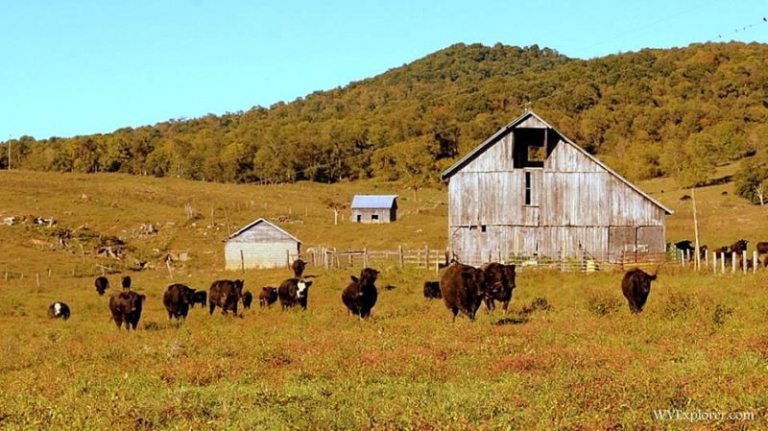Confronted with a potential hay shortage, three state agencies are advising cattle farmers in West Virginia how to maintain healthy herds. The looming shortage is most likely due to an unusually wet 2018 season, during which increased rainfall ruined and reduced hay crops.
The W.Va. Department of Agriculture, the state Farm Service Agency, and the WVU Extension Services are offering tips to help farmers locate hay or work through alternative feeding methods.
“Odds are we still have six weeks left of winter, if not more," Commissioner of Agriculture Kent Leonhardt said of the situation.
"Being halfway through the winter-feed season, farmers must take stock if they have enough hay to keep a well-fed and healthy herd. If hay is in short supply, farmers will want to avoid turning cattle out too early, as it could have affects on pasture feeding for next summer.”
Producers seeking and selling are being encouraged to connect, says Roger Dahmer, state executive direcot for the Farmer Service Agency.
“Producers seeking hay or those selling hay are encouraged to contact their Farm Service Agency county office, located within their local USDA Service Center. These lists are available to the public and can help connect sellers, buyers and those in need.”
The agencies are providing the following tips to help lessen the impact of a shortage.
- Inventory the hay supply on hand, and compare it to feed demand. Cattle prefer to eat about 2.5 percent of their body weight in hay dry-matter, which is equal to about 28 pounds of air-dry hay per 1,000 pounds of body weight.
- Locate available hay, straw, or corn fodder for purchase, which could require that it be trucked in from other states. Hay is generally the least costly feed for beef cattle.
- Consider limiting the hay to the animal’s nutritional requirement, but be careful as cows need to attain a body-condition score of 5-or-6 at calving if they're to conceive the next calf on time.
- Maintaining body condition on cows in cold weather helps reduce feed demand for maintaining body heat. Fat provides insulation from the cold and helps reduce shivering.
- Alternative sources of feed include soybean-hull pellets, wheat midds, whole cotton seed, or cotton seed hulls. These fibers are high in protein and should be available in West Virginia, depending on location.
- Other good sources of protein include dry distiller’s grain, corn gluten feed or soybean. These feeds provide good energy without any starch that would limit the digestibility of hay.
- Corn is often the go-to feed when hay supply is limited. However, corn is high in starch. If adequate protein is not mixed with the corn, this ends up reducing the digestibility of fiber in hay. A 14 percent crude protein feed made from commodity by-products without any corn (limiting the starch) is another good option.
“Farmers need to wait to turn out their herds until around April 15 in low elevations and May 10 in higher evaluations. Proper planning and working with your fellow farmers are ways to keep the heard healthy until that time,” Leonhardt said.
Read also: Locate your local county FSA office; Beef cattle nutrition requirements (pdf)





























